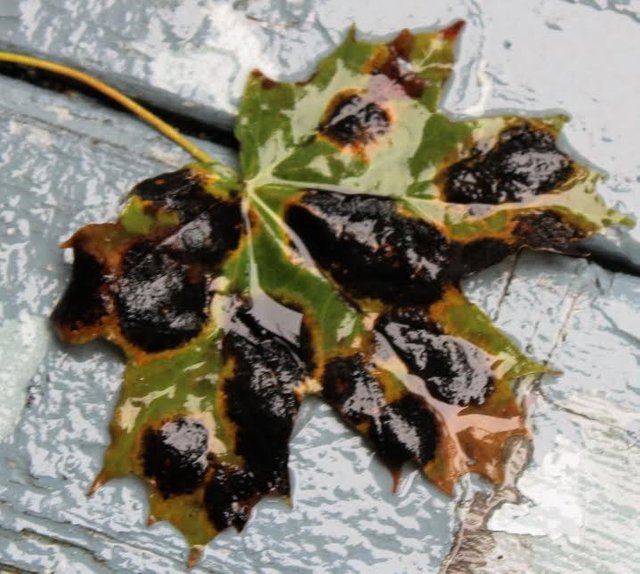Tar Spot
Tar spot is a common, visually distinctive and fungal leaf spot disease. Tar spot can affect many species of maple including big leaf, mountain, red, Rocky mountain, sugar, and sycamore maple.
If a maple tree develops a relatively small yellow spot or spots on the leaves, then it is most likely that tree has tar spot. The spots can remain small or they can get bigger as the season progresses. Worse, they can spread across the entire surface of the leaves. As this fungus matures, the centre of the infected area will become raised and turn black.
It is this black spot or blob that gives the infection its name, tar spot. The most common fungi that cause tar spot are Rhytisma acerinmu and Rhytisma punctatum.
There is no natural cure for tar spot. In the short term, it does not harm the tree but does damage the leaves. The most effective control is to rake up all the leaves from infected trees and bag them.
If this process is to work then all the leaves must be collected. If the municipality has a professional composter then the leaves can be composted. However, the standard backyard compost system will not get the job done, they do not get hot enough.

My interest in tar spot takes more of a long-term view than a short term one. In the short term, there may be no obvious, other than beauty, damage to the tree. However, over a period of years, it may be possible that the decreased leaf surface, due to tar spot, may impact on the tree’s ability to play its role in one of nature’s most important functions, photosynthesis.
People and animals rely on photosynthesis to make oxygen available so they can breathe. The roots absorb water and other minerals.
When these raw materials, water and oxygen, for example, flow into plant cells that contain chlorophyll, the chlorophyll draws on energy from the sun to change carbon dioxide into oxygen and glucose. Glucose is a sugar that helps plants grow. As this process takes place, the tree produces excess oxygen. The extra oxygen is released into the atmosphere.
The actual impact tar spot has on photosynthesis is not known.
Of more immediate concern is the fact that fallen leaves make great compost. They can be applied directly to the garden bed at the end of the growing season. Or, none infect leaves can be placed in green garbage bags and placed in a garage until spring. Once the snow has melted the contents of the bag may be added to the garden bed.
If there are infected maple trees on your property please rake them and bag them, until next week happy gardening.
